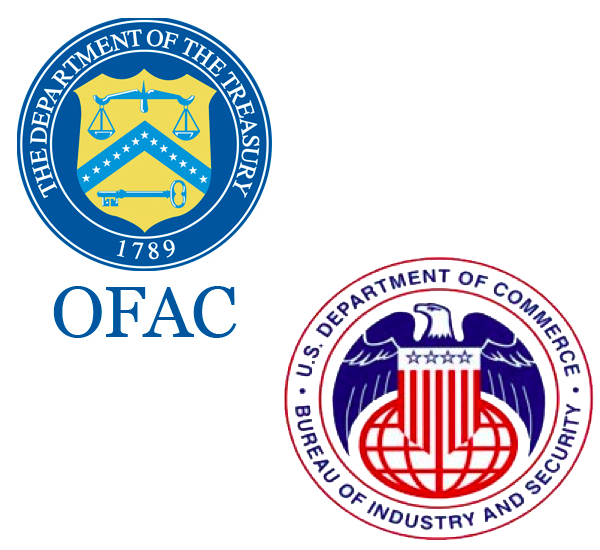
Justice Minister Failed to Appoint Investigation Supervisor in Military ...
This week, Justice Minister Yariv Levin finally abandoned his attempt to appoint a supervisor for the investigation into…

On February 24, 2023, US Office of Foreign Assets Control (OFAC) has issued a huge update of their sanctions’ regime.
Around that time, US Bureau of Industry and Security of the United States Department of Commerce (BIS) has issued an updated Implementation of Additional Sanctions Against Russia and Belarus Under the Export Administration Regulations (EAR) and Refinements to Existing Controls (Implementation).
Also, constantly updated US Munition List contains numerous groups of commodities related to military and defense sectors. Some of these are, too, mentioned in OFAC and BIS documents.
While OFAC and BIS expand their sanctions and indicate newly targeted individuals and entities, there is a need to realize not only what transactions are prohibited and permitted, but also what goods and categories of commodities are targeted within the recent loop of Russia-related sanctions.
OFAC and BIS sanctions have targeted many sectors of economy, including military and defense, metals and mining, quantum computing, aerospace, etc. From a practical standpoint, how to comply with these sanctions? How to check whether the goods that one may intend to export or to engage in transactions related to are not banned?
US President Executive Orders
The general documents in the matter of prohibited product groups are the US President Executive Order 14066 and Executive Order 14068 (US President Orders). These documents, inter alia, make the following prohibitions:
And, most importantly, both of this Executive Orders provide for the right of OFAC and BIS to define and clarify these categories, as well as to create lists of goods restricted for export and import.This short article deals with the issues of export from the US of certain goods.
OFAC Goods Determinations
While OFAC lists contain information on restricted individuals and entities, OFAC General Licenses, Determinations, and FAQs provide for the clarifications of the above-stated US President Orders. Namely, as of the date of the publication of this article:
BIS Commodities Lists
BIS, being an export control-oriented governmental body, maintains huge lists of goods banned from exportation to Russia. These lists utilize the Harmonized Tariff Schedule Codes (HTS Codes) system for determination of tariffs applicable to every single group of commodities. BIS lists use a 6-digit codes for their purposes (called “HTS-6 Code” for this matter in BIS documents), while one may encounter 10-digit codes (internationally recognized unified codes for transferred goods goods).
For search purposes, one should use just the first 6 digits of the given code. The complete and accurate current list of all the codes for all the goods of all categories can be found here (a huge PDF document that one can search in using codes or product name), or one can search for a given code with the US International Trade Commission search engine.
There are several major categories of BIS-restricted goods: energy-related products (including oil-refining goods), luxury goods, and chemicals that may be used for military and defense purposes.
The restricted goods with regards to Russia are found in the following documents. All of them are parts of the Subchapter C of the US Code of Federal Regulation (also known as BIS Export Administration Regulations or EAR):
The goods, export of which is permitted, if part or in general, are found in Part 740 to the EAR.
For example, let’s check whether Chewing gum is permitted to be exported to Iran.
Chewing gum corresponds to the code 1704.10.00 or just 1704.10 HTS-6 code.
When we initiate a search (by pressing Ctrl+F) of a given HTS code throughout the whole §746 of the EAR and find nothing resembling this code, we know that its export is permitted without additional license.
Let’s try something more serious such as Tearing gas, CS пgas, or riot control gas (2-Chlorobenzylidenemalononitrile). From the search we learn that it has a CAS no. 2698-41-1. By conducting a search in the Supplement 1 to the Part 774 EAR we learn that this gas requires a license to be exported.
US Munitions List and Wassenaar Arrangement
While some of the ammunition or military and defense-related restricted items are listed in the BIS Commercial Control List, this whole paragraph constantly refers to the US Munitions List (that contains conventional weapons and military vehicles and technologies) and Wassenaar Arrangement List of military-related dual-use goods. Both documents contain an exclusive list of ammunition and ammunition-related items (like military aircrafts and vessels), to which some sanctions regimes may apply.
US Munitions list forms Part 121 of Subcharter M of the US Code of Federal Regulation, while Wassenaar Arrangement is another internationally recognized list of ammunition implemented after Cold War.
The general rule of thumb is that the BIS Commercial Control List specifies exceptions and amendments from the Munitions List and Wassenaar Arrangement, while all of the items in both Munitions List and Wassenaar Arrangement are forbidden to export or reexport to Russia.
Are There Any Exceptions from These Sanctions?
Yes. The OFAC may issue General or Special Licenses that provide for certain permanent or temporary exceptions from the existing sanctions regime.
The BIS may issue from time to time the Additions and Revisions to the Entity List where it amend the applicable restrictions and list of persons that are subject to them.
How All These Lists Interact?
If one tries to determine whether the category of goods he intends to export, or to enter into transaction concerning this category, is sanctioned under the mentioned OFAC, BIS, and military goods regulations, one should know either the code of the product in question (HTS 6-digits Code or CAS Code for chemicals) or at least its product group (whether it is an agriculture- or medicine- or oil-related item).
Then, with this information, one must check all these lists:
IF it is a military item, THEN Munitions List and Wassenaar Arrangement, and check for exceptions in BIS Commercial Control List.
IF it is a non-military item, THEN to check OFAC Determination and the following Supplements to the Part 746 of the BIS EAR:
IF it is a medicine or medical device-related item, THEN check the OFAC General License No. 6C.
IF one wants to check a prospective counter-agent by company or an individual, THEN they should refer to OFAC Specially Designated Nationals and Blocked Persons List, BIS Entity list, and BIS Denied Persons list.
These instruments aim to provide with excessive instructions on how to structure the exporters’ business operations in order to comply with the existing and constantly updated US sanctions regime.
One can also refer to these charts provided by the EAR (Supplements 1 and 2 to the Part 732). These algorithms may help determine whether a US-exporter may be required to obtain such a license. These charts refer to the two additional code systems: EAR99 (that includes common-use foods and medicals) and ECCN (inter-American code system for exporters not included in the EAR99).